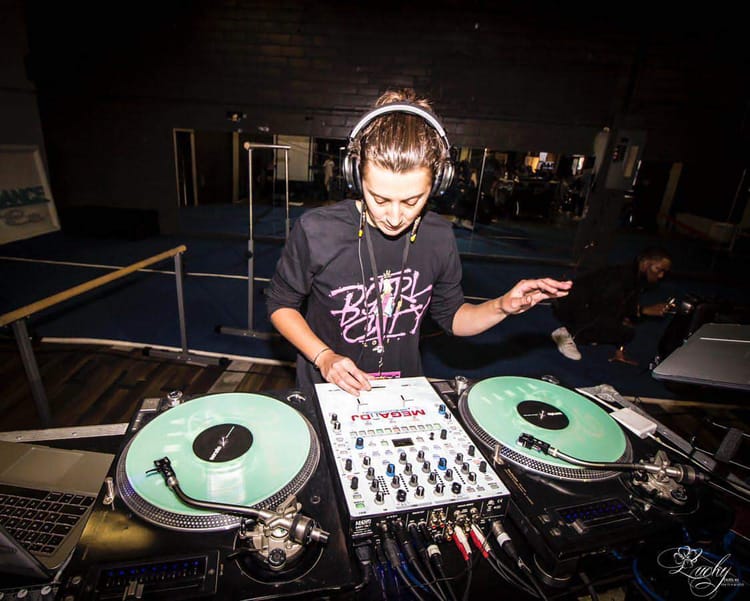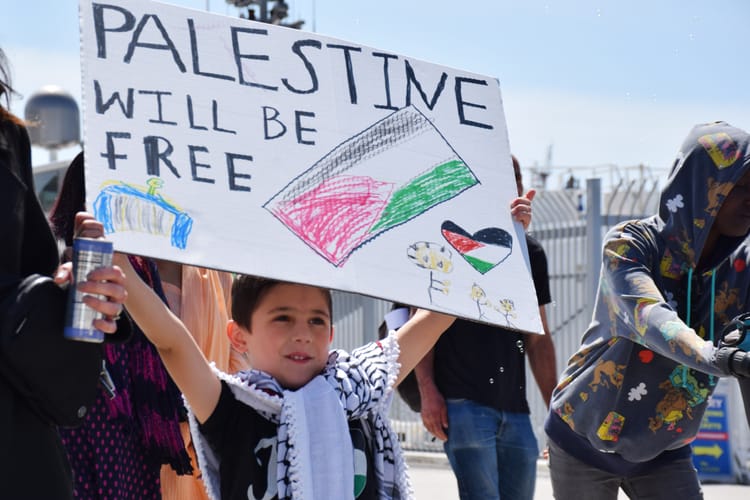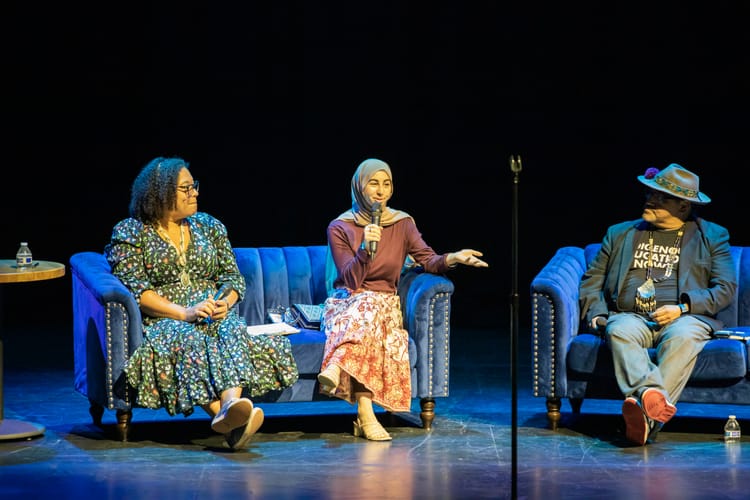Meet co-founder Brittany Cruz-Fejeran, Daylight's visual expert
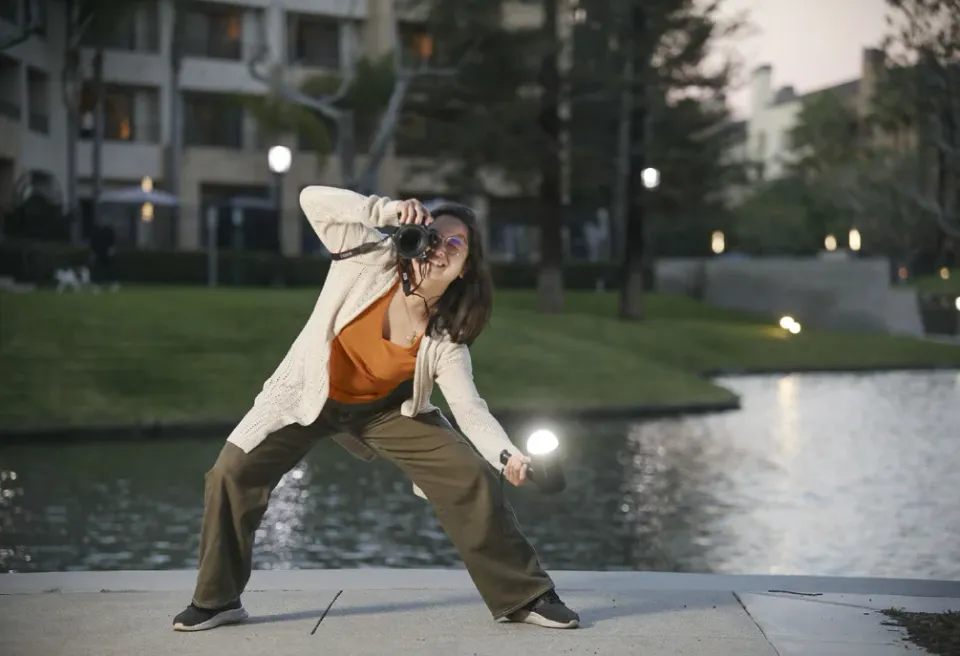
Brittany Cruz-Fejeran specializes in visual stories and loves covering community-oriented topics
Introduce yourself.
My name is Brittany Cruz-Fejeran (she/her) and I'm CHamoru, born and raised on Guåhan in the Mariana Islands.
Why did you become a journalist?
I wanted to become a journalist because I loved telling stories through photography, but what makes me continue journalism is my ability to give a voice to my CHamoru people.
What type of journalism do you like to cover? What topics?
My favorite topics to cover are stories about people doing their best to help others and the cultural revival of the CHamoru people. I also love learning about random innovations in science. For example, if done right, poop can become a sustainable energy source through its creation of a biogas called methane. This was a super fun story to write.
Who’s your favorite musical artist?
Billie Eilish, Dominic Fike, MICHELLE, Doja Cat, Kendrick Lamar
What TV shows or movies are on your mind at the moment?
My partner and I are watching an anime called Dungeon Meshi. I love the way anime can tell an amazing story being serious and silly at the same time. We are also eagerly anticipating a new batch of episodes of Bob’s Burgers. It’s the ultimate comfort show!
What hobbies do you have?
I love houseplants. I have… a lot. I also love making terrariums and talking to people about making them. I love playing video games in my spare time. My favorite games are the Last of Us series and the Ori series.
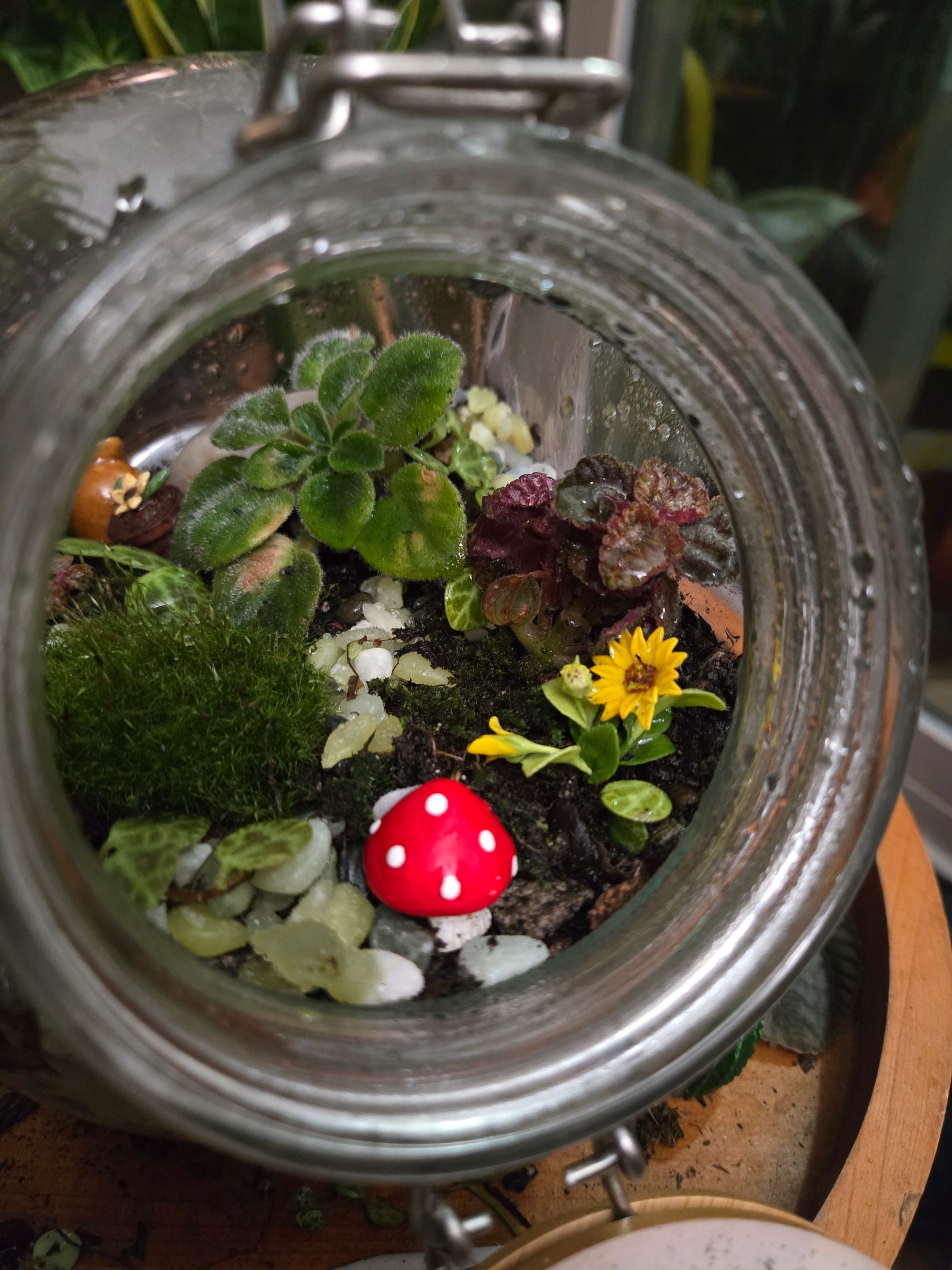
What does living in San Diego mean to you?
Living in San Diego means having the opportunity to meet people with backgrounds and connections from all over the world. I grew up living as the majority population in the Mariana Islands. I learned so much since moving here eight years ago, and I’m so grateful for what this region has taught me.
If you weren’t a journalist, what would you be doing instead?
Anything that involves animals and learning about them.
If you could interview any person, living or dead, who would it be and why?
I want to interview my great grandmother on my mom’s side. She survived World War II when the Japanese occupied the Mariana Islands. I wish I could hear more about her experiences during that time and her life after that.
Do you have a favorite journalist or writer who inspires you?
I don't have a favorite journalist, but seeing my journalist friends push out good work that'll help people inspires me.
What’s the most unexpected or bizarre story you’ve ever covered?
One of the most memorable stories I covered was in 2021 when Caitlyn Jenner was running for governor. She was doing a tour of the U.S.-Mexico border and talking with Border Patrol agents about the resources they needed.
To get to her event, I had to drive along the border at 10 mph because I couldn't see through the orange dirt getting kicked up by the cars in front of me.
Jenner’s public relations team had us set up on a very steep hill. As I drove toward the hill, one of her team members said to me, when you’re ready, gun it and wiggle your wheel around so your car can get traction. I, being the most eager intern, did exactly that, hiding my excitement that I made it up the hill without any hiccups.
I got out of my car and saw the rest of the reporters walking up the hill instead of doing the cool trick Jenner's staffer told me to do.
The reporter I worked with told me there was no way she was doing that to her old car.
Looking back, I don’t think my Nissan appreciated it either.
Later, my car got stuck in a ditch, and the reporter and Jenner’s team member helped me get it out. When I got home, the layers of orange dirt on our car gave my partner a heart attack.
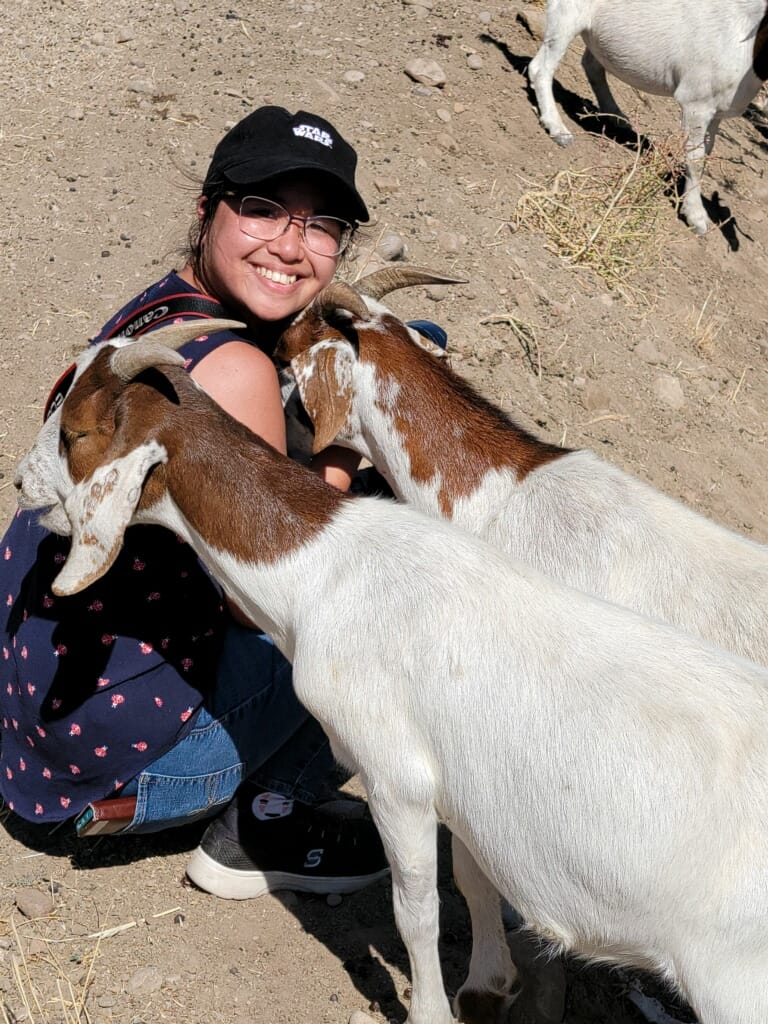
I also love thinking back on an assignment that required me to figure out how to take photos of goats grazing a hillside to prevent brush fires.
After stopping on the shoulder lane of the 805, knocking on doors to get an angle from different yards and climbing a hill adjacent to where the herd was, I called the owner of the herd, and he let me hang out with the goats up close.
They were very curious animals and tried to head butt my camera several times, but I could never be mad at them. My editor was so supportive, letting me loose on this goat assignment for four hours.
If you could write a headline for your life right now, what would it be?
Dog mom suffers third mental breakdown of the week, partner says she was very hungry
Community highlight by Lauren J. Mapp
The 1619 National Celebration of Black Women unveiled its community-created Stories Quilt on Tuesday at the San Diego History Center in Balboa Park.
Made of three quilted panels, the installation features 80 white, yellow, green and red fabric squares inscribed with handwritten messages, then sewn together with African fabric. Messages on the squares include, “I am my ancestors’ wildest dream! I live!!!” and “We are a beautiful and resilient people.”
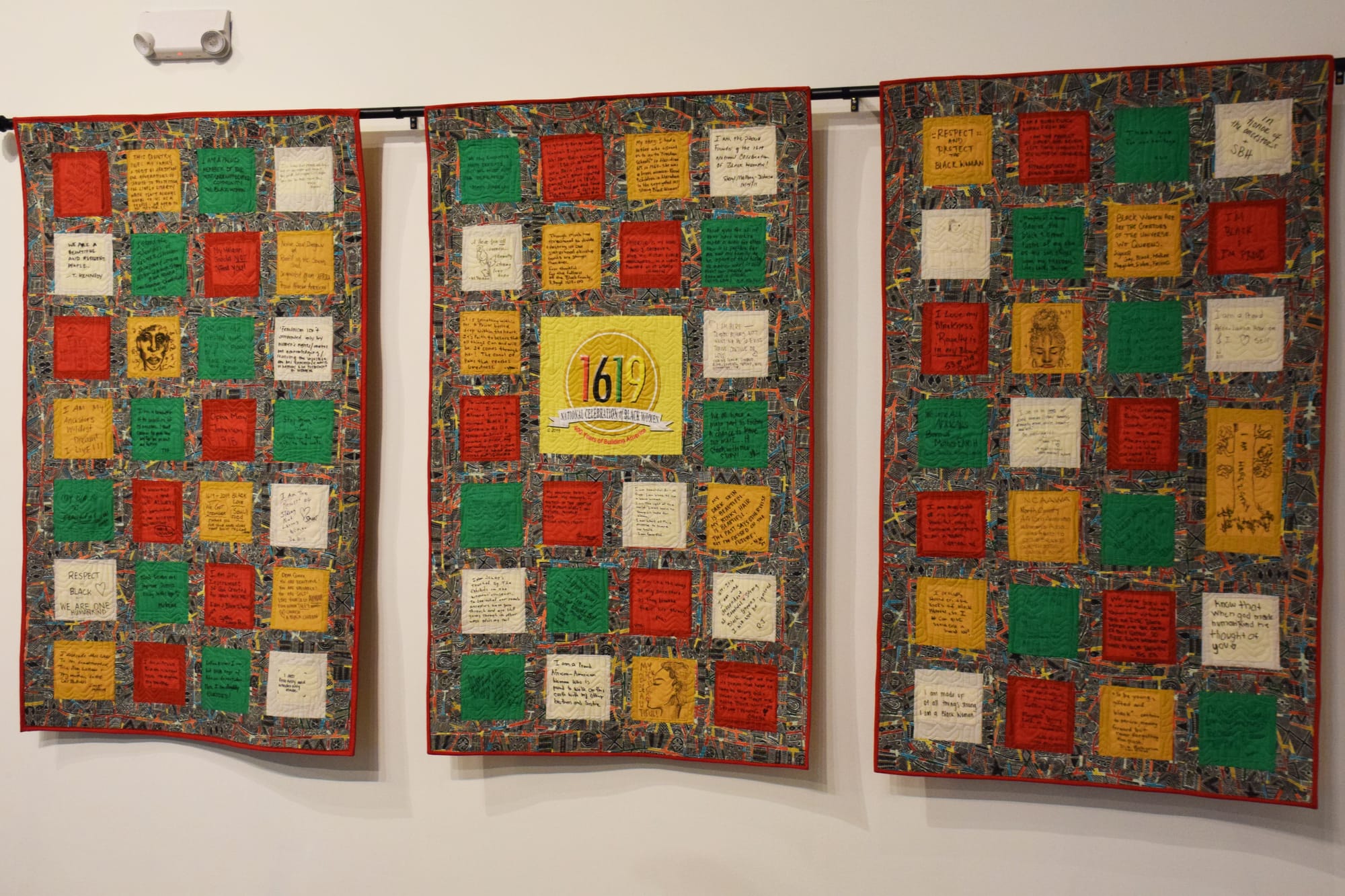
The project started in 2019 during a series of events memorializing the 400th anniversary of when the first ship carrying enslaved Africans arrived in the English colony of Virginia, according to Sheryl Mallory-Johnson. She is the founder, CEO and executive chair for the 1619 National Celebration of Black Women.
“(We wanted to) make sure we highlighted these extraordinary women that came before us who were able to defy the odds and come out victorious,” she said. “We wanted to uplift and educate Black women and girls about their ancestry in a very positive light. We understand our plights, but often we don't get to talk about our triumph.”
During an October 2019 event the group organized at the Women’s Museum of California in Liberty Station, guests wrote on squares of cloth to honor their experiences as Black women or to share family stories. The messages were later quilted together by Annette Johnson, Loretta Moore and Vicki S. Hart.
During the opening event for the piece on Tuesday at Balboa Park, project curator and creator Leah Goodwin said she felt emotional seeing the quilt hanging on the museum walls more than five years after the initial event.
In that time, she said, much has changed in the world. Continuing to connect, educate and learn, she said, will ensure that Black women “can never be erased.”
“I hope people will learn a little more about their neighbors, about Black women, and go a little deeper into the history and story of quilting,” Goodwin said. “(I especially hope they learn) to understand the ancestry and the legacy that we all carry with us all the time.”
She added that sharing culture and history through art is a way to help the wider community reconnect.
“Art helps people learn more about our commonalities and our differences, and I believe that is how we are going to heal,” Goodwin said.
The quilt will be on display at the San Diego History Center until April 18.
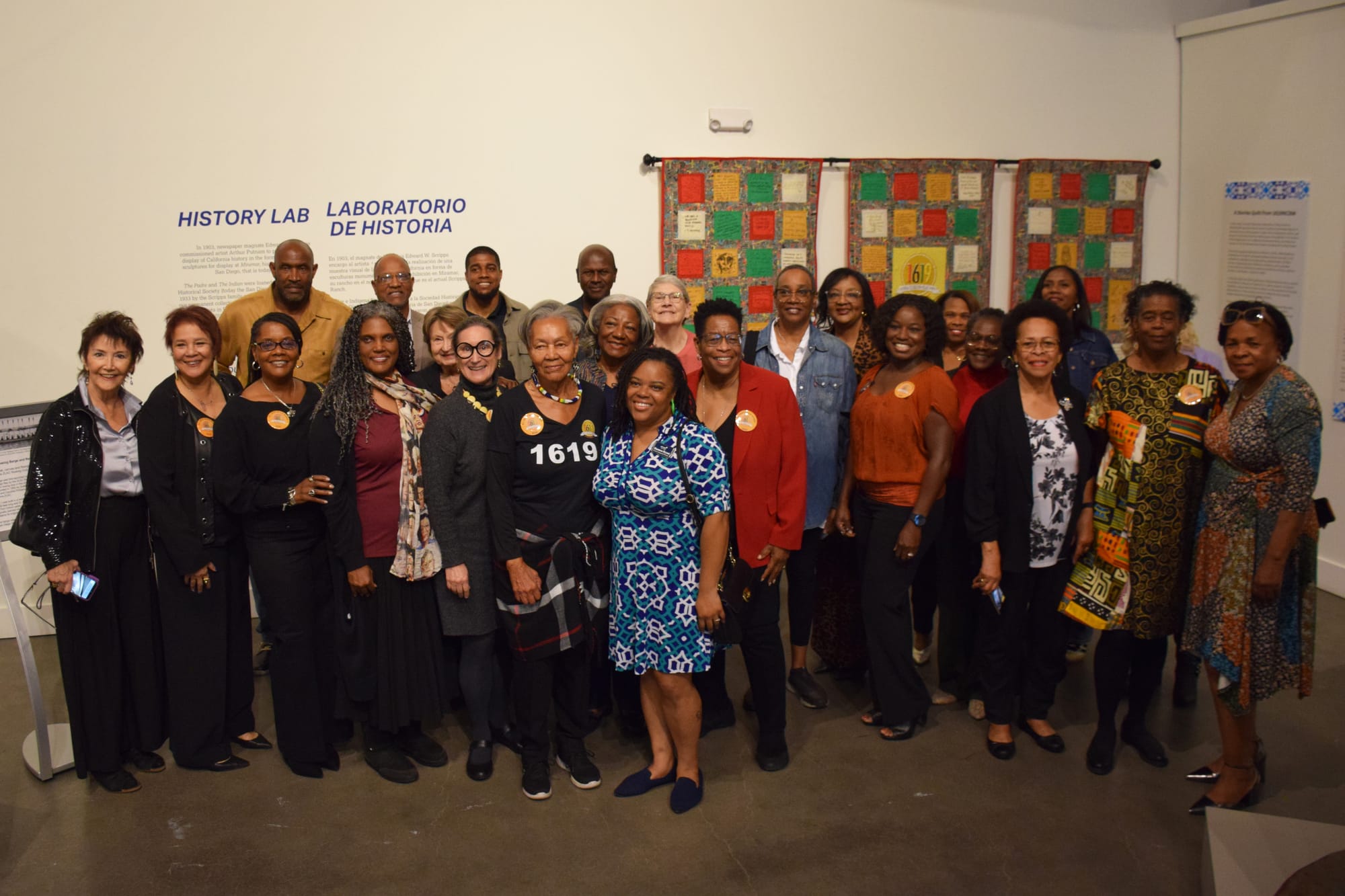
Want to support our efforts to bring Daylight to San Diego?
- Please subscribe to our newsletter so you’re the first to know when we publish content or announce upcoming listening sessions.
- Consider making a tax-deductible donation to our fundraising campaign on Givebutter. Thanks to a generous donor, we have received the first $1,110 toward our goal of raising $50,000 by July 1 to support our journalism.
- We are continuing to accept submissions to our Daylight San Diego Community Survey to help shape upcoming news content.
- Hit the follow button on our social media platforms (Instagram, TikTok, X/Twitter, Bluesky, Facebook, LinkedIn and YouTube) and share our page with your own community within the region.

